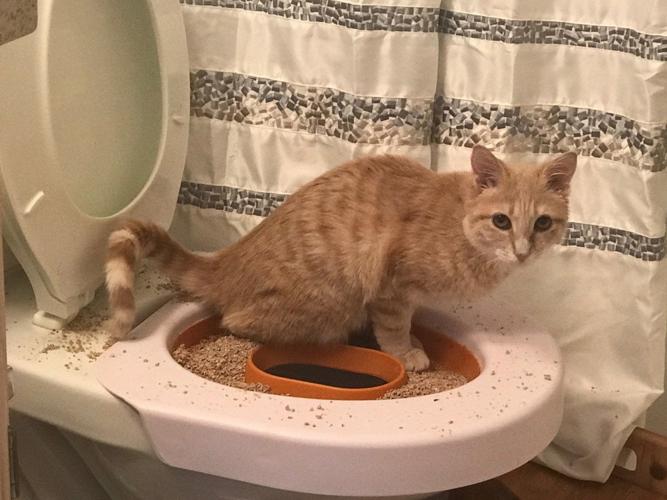Never Flush Cat Poop Down Your Toilet - Protect Your Plumbing System
Never Flush Cat Poop Down Your Toilet - Protect Your Plumbing System
Blog Article
The article which follows about Don’t flush cat feces down the toilet is relatively insightful. Don't overlook it.

Intro
As cat owners, it's vital to be mindful of how we take care of our feline good friends' waste. While it might seem convenient to flush cat poop down the bathroom, this method can have damaging effects for both the setting and human health and wellness.
Ecological Impact
Flushing cat poop introduces dangerous microorganisms and parasites into the supply of water, presenting a considerable threat to marine ecosystems. These impurities can adversely affect aquatic life and concession water quality.
Health Risks
In addition to ecological problems, flushing cat waste can also posture wellness risks to people. Feline feces might have Toxoplasma gondii, a parasite that can trigger toxoplasmosis-- a potentially severe disease, specifically for expecting ladies and people with damaged immune systems.
Alternatives to Flushing
Fortunately, there are more secure and more responsible ways to dispose of pet cat poop. Take into consideration the following options:
1. Scoop and Dispose in Trash
One of the most typical technique of taking care of pet cat poop is to scoop it into a naturally degradable bag and toss it in the garbage. Make sure to utilize a committed trash inside story and take care of the waste quickly.
2. Usage Biodegradable Litter
Choose eco-friendly feline litter made from materials such as corn or wheat. These trashes are environmentally friendly and can be safely gotten rid of in the trash.
3. Bury in the Yard
If you have a backyard, think about burying cat waste in a designated location away from vegetable gardens and water resources. Make sure to dig deep sufficient to avoid contamination of groundwater.
4. Set Up a Pet Waste Disposal System
Purchase a family pet waste disposal system specifically designed for pet cat waste. These systems utilize enzymes to break down the waste, lowering smell and environmental effect.
Conclusion
Responsible pet possession prolongs past offering food and sanctuary-- it additionally includes correct waste management. By refraining from flushing cat poop down the toilet and choosing different disposal approaches, we can decrease our environmental impact and secure human health and wellness.
Why Can’t I Flush Cat Poop?
It Spreads a Parasite
Cats are frequently infected with a parasite called toxoplasma gondii. The parasite causes an infection called toxoplasmosis. It is usually harmless to cats. The parasite only uses cat poop as a host for its eggs. Otherwise, the cat’s immune system usually keeps the infection at low enough levels to maintain its own health. But it does not stop the develop of eggs. These eggs are tiny and surprisingly tough. They may survive for a year before they begin to grow. But that’s the problem.
Our wastewater system is not designed to deal with toxoplasmosis eggs. Instead, most eggs will flush from your toilet into sewers and wastewater management plants. After the sewage is treated for many other harmful things in it, it is typically released into local rivers, lakes, or oceans. Here, the toxoplasmosis eggs can find new hosts, including starfish, crabs, otters, and many other wildlife. For many, this is a significant risk to their health. Toxoplasmosis can also end up infecting water sources that are important for agriculture, which means our deer, pigs, and sheep can get infected too.
Is There Risk to Humans?
There can be a risk to human life from flushing cat poop down the toilet. If you do so, the parasites from your cat’s poop can end up in shellfish, game animals, or livestock. If this meat is then served raw or undercooked, the people who eat it can get sick.
In fact, according to the CDC, 40 million people in the United States are infected with toxoplasma gondii. They get it from exposure to infected seafood, or from some kind of cat poop contamination, like drinking from a stream that is contaminated or touching anything that has come into contact with cat poop. That includes just cleaning a cat litter box.
Most people who get infected with these parasites will not develop any symptoms. However, for pregnant women or for those with compromised immune systems, the parasite can cause severe health problems.
How to Handle Cat Poop
The best way to handle cat poop is actually to clean the box more often. The eggs that the parasite sheds will not become active until one to five days after the cat poops. That means that if you clean daily, you’re much less likely to come into direct contact with infectious eggs.
That said, always dispose of cat poop in the garbage and not down the toilet. Wash your hands before and after you clean the litter box, and bring the bag of poop right outside to your garbage bins.
https://trenchlesssolutionsusa.com/why-cant-i-flush-cat-poop/

As a serious person who reads about Can You Flush Cat Poop Down The Toilet?, I think sharing that excerpt was worth the trouble. For those who appreciated our blog posting plz don't forget to share it. I appreciate reading our article about Can You Flush Cat Poo or Litter Down the Toilet?.
Call Today Report this page